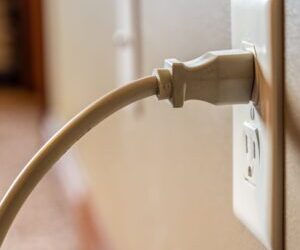Getting your home ready for the summer and the year ahead means more than just cleaning. Spring is the perfect opportunity to take care of some basic home maintenance. From inspecting your roof, to cleaning faucets and checking pipes, there’s a lot you can do in the spring months to protect the value of your home.
Here are seven tips for spring maintenance this year.
1: Home Inspect and Caulk Your Exterior
If you experienced drafts or moisture entry during the winter, then it’s time to inspect your exteriors. Ideally, this should be done before winter. If you didn’t get around to it last year, then spring is the perfect time to make up.
Inspect all exterior surfaces of your home. Look for cracks, gaps, and other forms of damage. Caulking is perfect for filling in smaller gaps. You could use spray foam to fill in larger areas of deterioration.
If your home has suffered extensive exterior damage, then it could be the perfect time to renovate. Repairs or new siding could protect your home structure and add value.
2: Check Gutters and Downspouts
Gutters and downspouts could become damaged during the winter months. Look for debris buildup and clear out any blockages. Use a hose to check that water is flowing freely into your drainage system.
If blockages from debris and leaves are common at your home, you could consider installing a gutter guard. This is a simple DIY project that will reduce ongoing maintenance needs.
3: Clean Your Siding
If you’ve inspected your siding and found no damage, then the next step is to clean it. Cleaning your siding will remove dirt and dust and prevent buildup of mildew.
You can use a pressure washer to quickly and efficiently clean your home exteriors. If you don’t own one, then consider hiring one for a day. It’s a quick and easy job and you’ll save money when compared to a professional cleaning service.
If you notice extensive chipping, flaking, or cracks in the paint of your exterior, it could be time for a new coat. Professional renovators will be able to do this quickly and affordably. A fresh coat of exterior paint can help protect your home from damage.
4: Inspect Window and Door Sills
Carefully inspect your window and door sills for deterioration and cracks. These can allow air through in the winter, and in the summer, they can increase the chance of infestation. Use caulk to fill in cracks around edges. Apply a fresh coat of exterior paint over your work.
5: Inspect Your Basement and Foundations
Moisture and water entry could cause considerable damage to your home. If you don’t spot these problems early, the damage could become catastrophic. Strong foundations can ensure your home will last for generations. Check around your foundation walls, basement walls, and pillars. Ensure that masonry is not showing signs of cracking, crumbling, or other deterioration.
Superficial cracks on foundation floors are common, but you need to be sure they aren’t structural. Cracks more than a millimeter in thickness are warning signs. You shouldn’t be able to slide a nickel into flooring cracks, and they should not be expanding in length. If you notice small cracks, mark them with a dot of paint or a permanent marker.
If the cracks get worse in the coming weeks, then you’ll need to call in a specialist.
6: Clean and Inspect Your Roof
Your roof can take a beating during the winter. Rain, wind, and snow all take their toll. Springtime is perfect for inspecting your roof to look for damage. Check for loose or displaced shingles, or damage to steel roof panels. You can pressure clean your roof if you have safe access and the right equipment.
If you aren’t confident with cleaning or inspecting your roof, then have a professional inspection performed. A yearly inspection by yourself or a professional is a great way to protect your home from future damage.
7: Check Decks for Deterioration
Decks could be damaged by rain, snow, and hail. Inspect all your decks. Look for loose boards and railings. Check the foundations around your deck to ensure that they are stable. If you have a level, then check that your deck is not sagging or tilting in any area.
You will be able to repair minor damage with basic tools. Securing boards and railings etc. with nails or bolts will typically not require a professional. For any significant damage, talk to the experts.
Spring maintenance ensures that your home will be ready to enjoy in the summer. Follow these basic maintenance tips and protect your home for the year ahead.



0 Comments